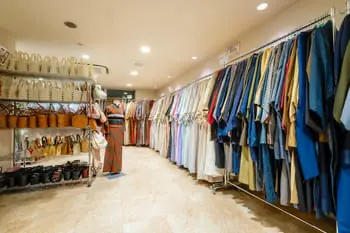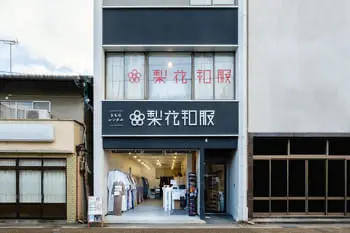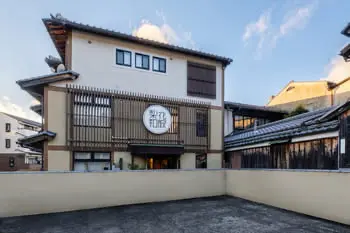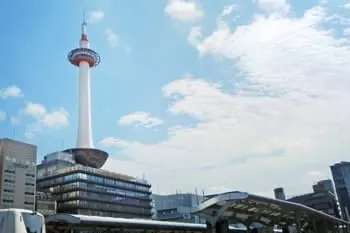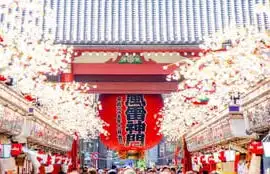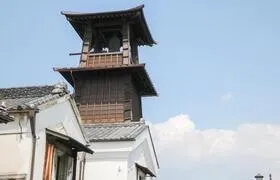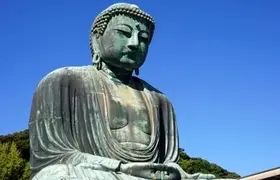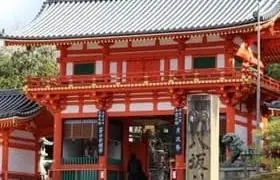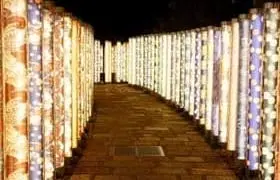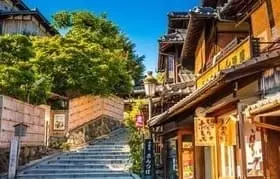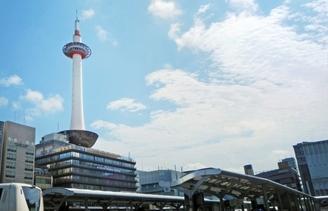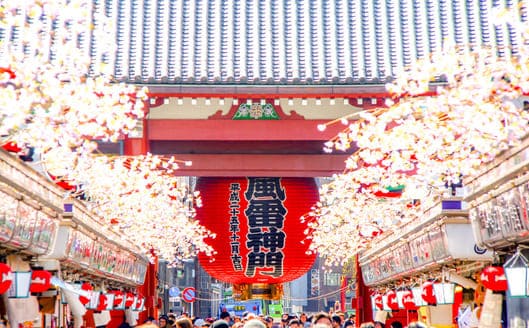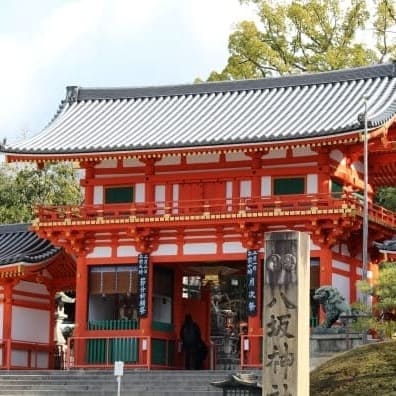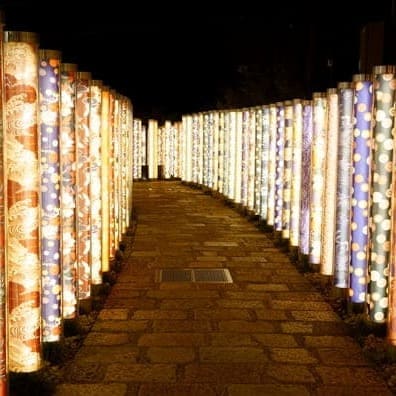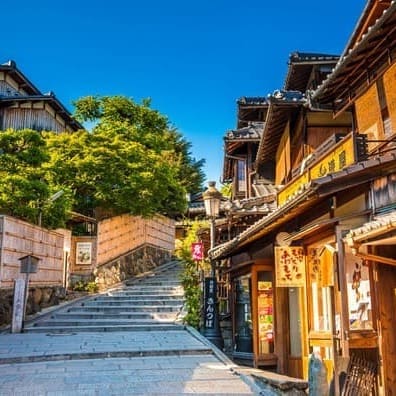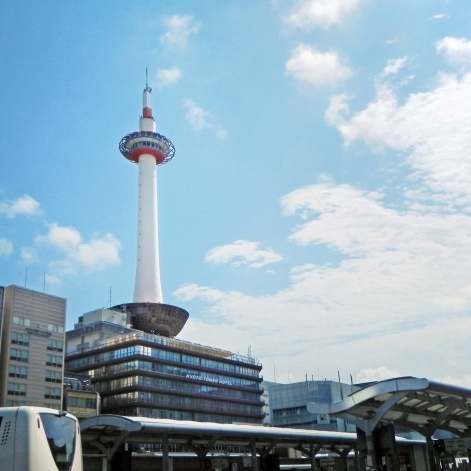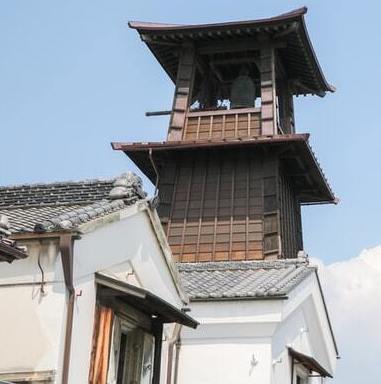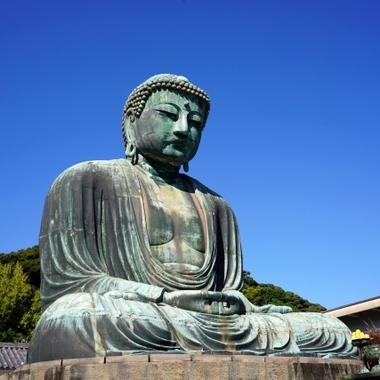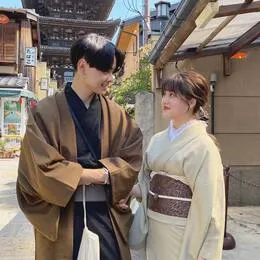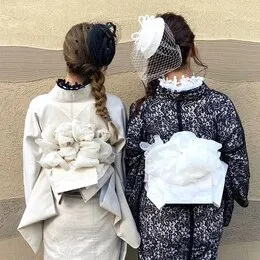See Kyoto’s Beautiful Autumn Leaves & Try a Yukata!
Wearing a yukata and going out can make you feel a bit uplifted and experience something out of the ordinary.
Summer brings many opportunities to wear yukata, such as fireworks festivals and summer festivals, and it’s not uncommon to see people walking around the streets in yukata.
When you wear a yukata, it feels like your posture straightens up more compared to regular clothes, enhancing your “elegance.”
This summer, you might want to wear yukata more, but you may be unsure whether it’s better to rent or buy yukata since there are yukata available for purchase on flea market apps and online stores.
So, this time, we’ll tell you the advantages and disadvantages of renting yukata and buying yukata.
The advantages of using a yukata rental shop are as follows:
- If the price is the same, rental shops usually offer higher-quality yukata.
- There is a wide variety of yukata materials and designs to choose from among many rental yukata.
- Depending on the occasion, it can be more cost-effective than buying.
- No need to worry about yukata maintenance.
- Dressing and hairstyling services are included.
On the other hand, the advantages of buying yukata are as follows:
- If you plan to wear yukata multiple times, it can be cost-effective.
- You can prepare at home before going out.
- You don’t have to worry about return times, etc.
Are Yukata Rental Shops Known for High-Quality Yukata?
In most cases, yukata rental shops source their yukata from yukata wholesalers. Therefore, they can purchase them at a lower cost than the retail price found online or in physical stores.
In many cases, when the price is the same as what a general consumer would pay to purchase a yukata, the yukata available at rental shops are likely to be of better quality.
Various Materials and Designs for Yukata
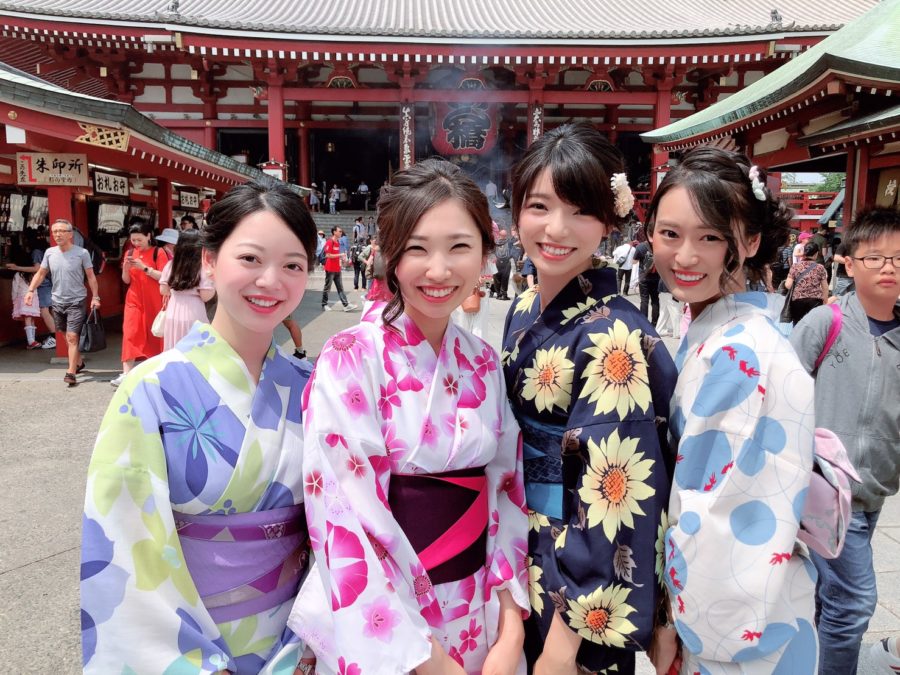
Recent yukata designs are rich, and when you look at them, you might find yourself admiring various patterns and colors, unable to decide which one you like best.
Yukata fabrics are often thought to come in only one type, but there are actually various kinds available.
Materials like cotton ro, silk koubai, cotton hemp, and others, with names that may not sound familiar, are all used for yukata.
Furthermore, there are various ways to apply patterns to yukata, including traditional patterns, translucent fabrics, and ones with glitter (lamé), resulting in a wide variety of designs.
While it is said that traditional Japanese clothing can be worn for a long time once made, new yukata patterns and colors come out every year, just like changing times.
Additionally, the patterns that suit individuals may change depending on their age.
There are patterns that look good on younger people and ones that become more suitable as one grows older.
With so many different designs of yukata available nowadays, I think it’s a good idea to try various options through rental until you find the yukata that you absolutely want.
The Timing and Location of Wearing Yukata Are Important Factors
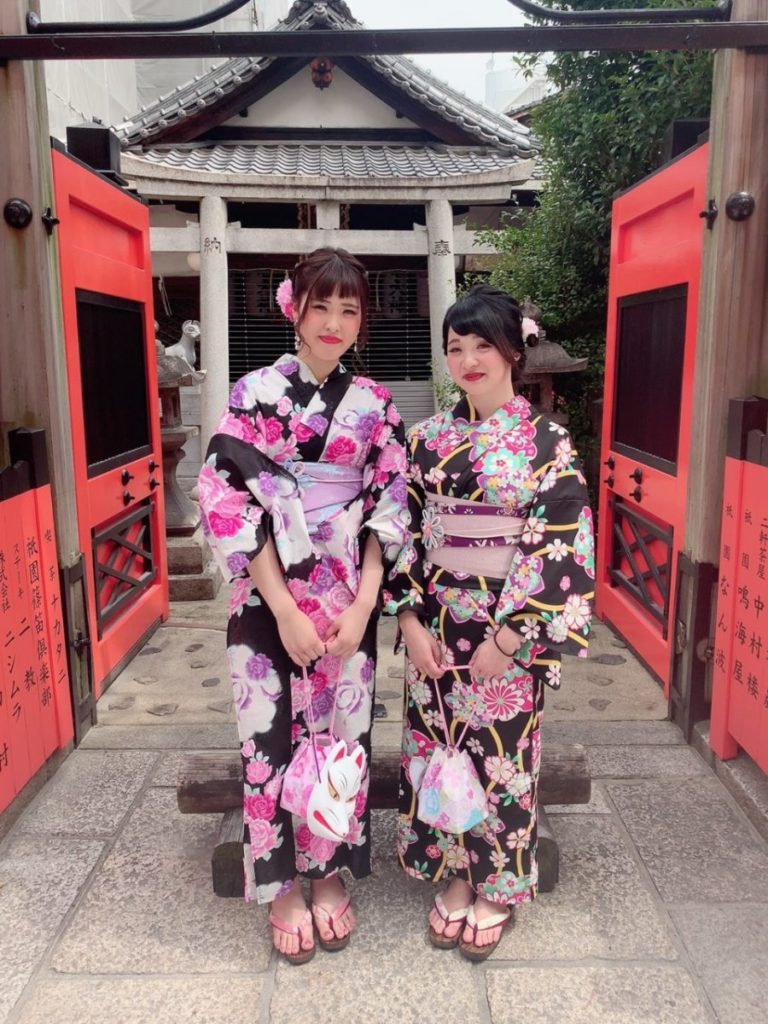
Whether renting yukata or buying it largely depends on the time of day and the location of your outing in yukata.
If you plan to wear yukata for activities like Asakusa sightseeing or fireworks festivals from the morning to evening, renting yukata is definitely more cost-effective.
In addition to rental yukata, all the necessary accessories for dressing, such as geta sandals and bags, are included in the rental fee, so you don’t need to purchase them separately.
If you can’t return the rental yukata within Rikawafuku Kimono’s business hours or if you want to participate in an all-night event in yukata, buying yukata is convenient because you won’t have to worry about the time.
At Rikawafuku Kimono, you can also bring your purchased yukata and request only the dressing service, so please feel free to consult with us.
About Caring for Yukata
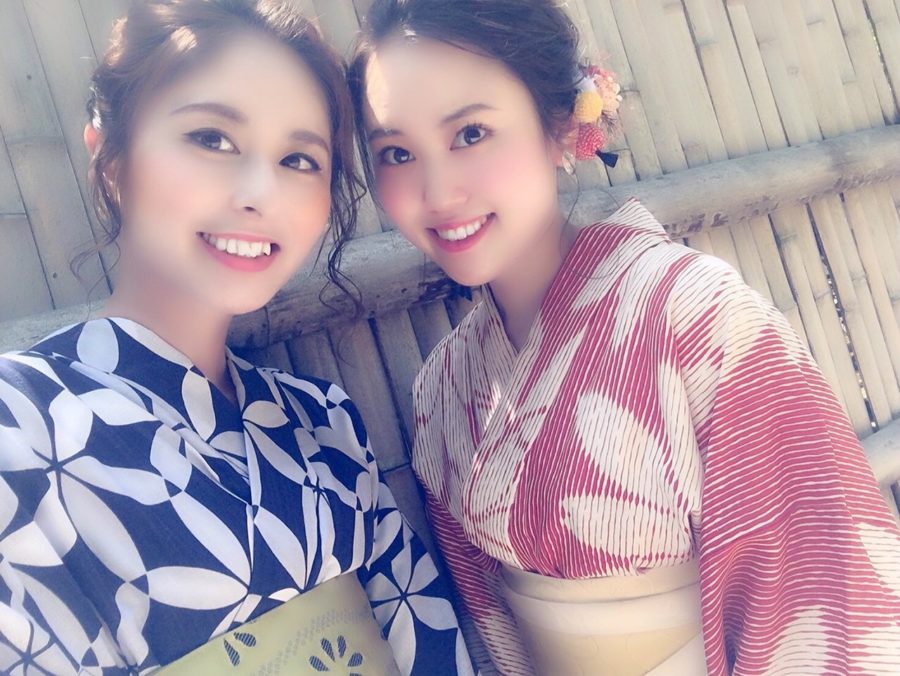
When you first buy a yukata, it comes neatly folded with starch, giving it a crisp finish.
Most people, when wearing a brand-new yukata for the first time, tend to remove only the temporary stitching of the new yukata.
Putting on a new yukata doesn’t usually result in wrinkles, right?
However, if you plan to wear the purchased yukata several times during the summer, you will need to wash it.
As for the fabric material, home washing is usually fine, but cotton yukata tends to wrinkle.
If you wash it at home, you must always iron it.
Taking it to a dry cleaner will return it to a new-like condition with starch, but taking it to the dry cleaner multiple times over the summer can be cumbersome and costly.
Even if you bought an affordable yukata, if maintenance costs add up, buying a yukata for sale may not seem cost-effective.
In the case of rental yukata, you can simply leave the yukata as it is after taking it off and return it. No maintenance required, and you can enjoy various yukata hassle-free. That’s why rental yukata is more convenient.
The Key Point for Yukata Rental and Purchase Is the Ability to Dress
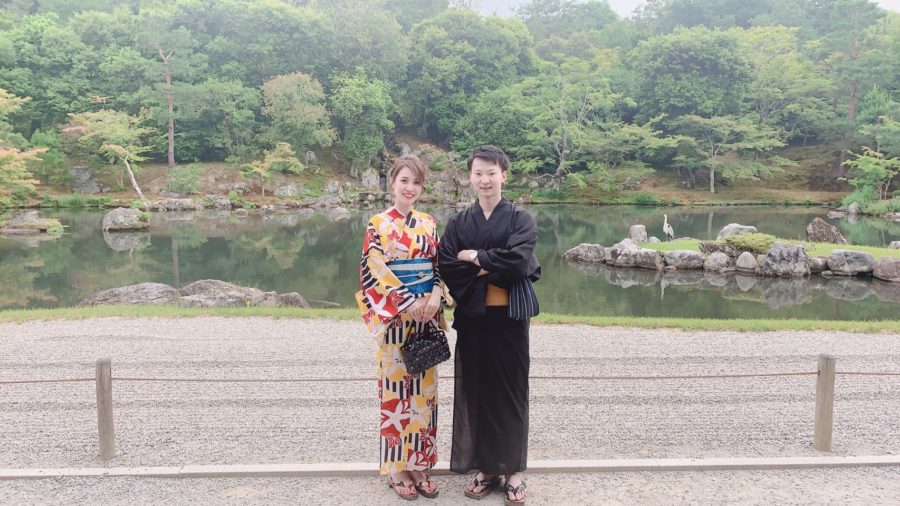
For those who already own a yukata and those considering purchasing one, the most concerning factor is probably the ability to dress in it, don’t you think?
In the summer, there are often easy-to-follow dressing instructions in books and magazines, but when you actually try to dress yourself, you may not be able to do it well or achieve the desired look, right?
If you have someone like your mother or grandmother who can dress you in yukata anytime, you don’t need to worry at all. But it’s not always guaranteed that they will be available on the day you want to wear yukata.
At Rikawafuku Kimono, the dressing fee is included in the yukata rental, and all the necessary accessories for dressing are included in the set, so you can come empty-handed.
Check out Rikawafuku Kimono’s yukata rental plans:
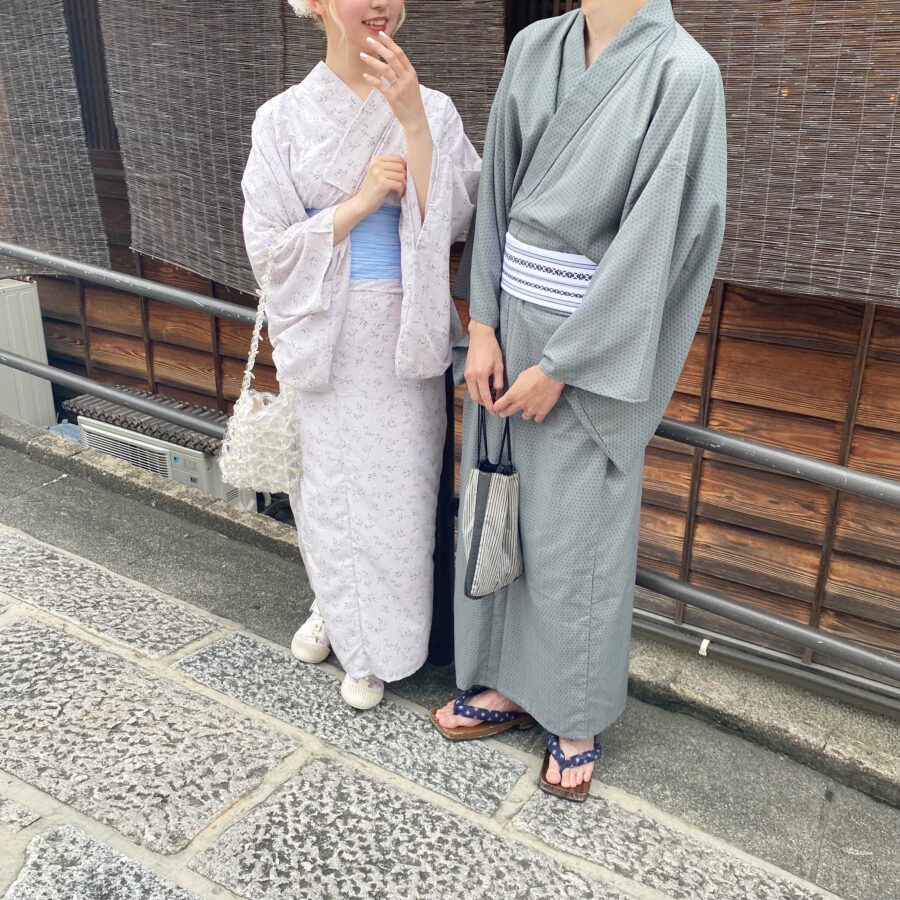
First, let’s compare the average prices of yukata for both ‘purchase’ and ‘rental’.
What is the average price for purchasing a yukata?
Firstly, it’s important to note that the price range for women’s yukata varies significantly. Some are surprisingly affordable, while others can be incredibly expensive.
For example, at the well-known affordable clothing store ‘Shimamura,’ women’s yukata sets, including the obi, waist cord, and obi board, start from the 4,000s to 5,000s yen range.
At ‘AEON,’ the average price ranges from 9,800 to 14,800 yen, while the popular brand ‘Kyoto Kimono Machi’ offers yukata priced from 2,980 to 45,000 yen, showing a wide price range.
Additionally, whether you choose to have it custom-tailored or buy a ready-made one can also affect the price. Having a yukata tailored with your favorite fabric can cost around 20,000 yen, depending on the tailor.
As far as my research goes, the cheapest yukata I found was in online lucky bags like Rakuten, where you can get 2 yukatas for 500 to 1,000 yen. However, in these cases, you cannot choose the patterns, and they might be limited to certain seasons.
If you pick a less expensive yukata from a kimono shop, you might find ones priced in the 5,000 yen range, but keep in mind that machine-stitched yukata might not be as durable as hand-stitched ones.
Considering these factors, you can think of the average price for purchasing a yukata to be around 5,000 to 20,000 yen.
What is the average price for renting a yukata?
Now let’s talk about rental options, which can also vary depending on the store and location.
For example, the average cost for renting a yukata in Tokyo can range from less than 2,000 yen for the cheapest options to rarely exceeding 6,000 yen. These prices often include obi (sash), dressing accessories, and the dressing service itself.
In tourist areas like Asakusa, there’s a slight trend towards lower prices. Based on my research, in Asakusa, you can find yukata rentals for as low as the 1,800 yen range, with an average price range in the 3,000 yen range and higher-end options around 5,000 yen.
Considering these factors, the price range for yukata rental in Tokyo is generally around 2,000 to 5,000 yen.
Differences between Purchasing and Renting Yukata
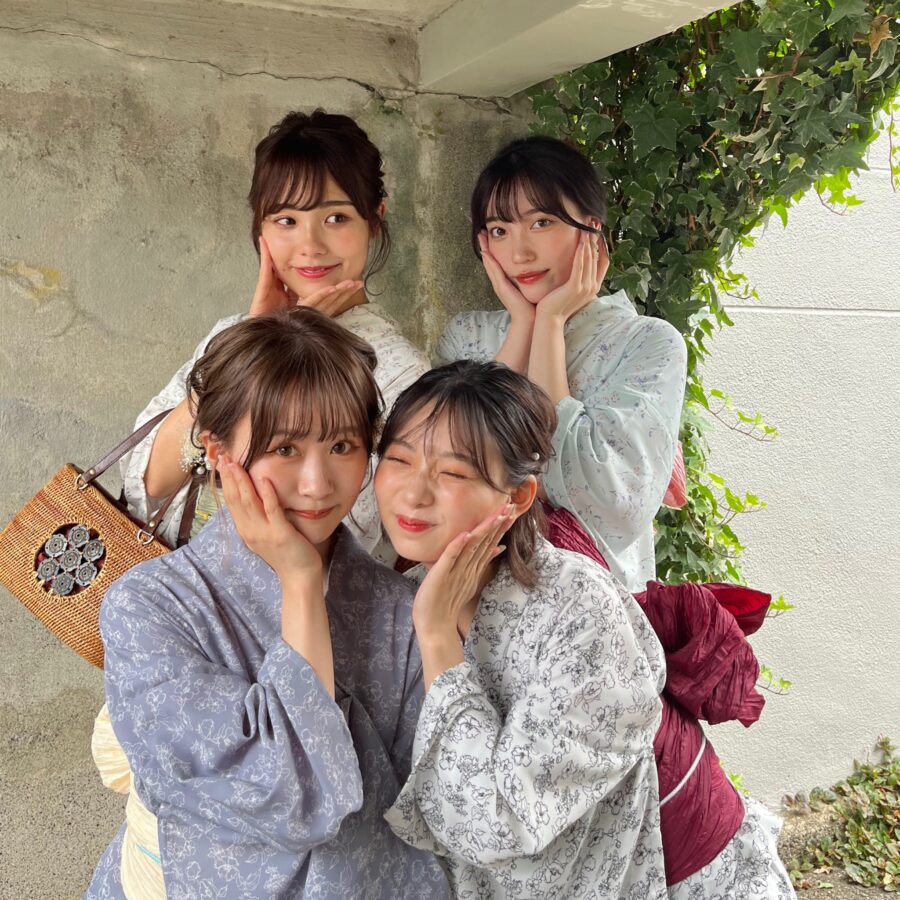
While I’ve explained the differences in price between purchasing and renting yukata above, the decision isn’t solely based on price range.
Even if the price is low, if the content isn’t satisfying, you may end up wasting your money. Let’s compare the content differences between purchasing and renting yukata.
Comparison of Content: Renting vs. Purchasing Yukata
As mentioned earlier, when you purchase a yukata, it usually includes just the yukata itself or, at most, a minimal dressing set. While a minimal set may suffice for dressing, it may be challenging to achieve your desired look.
Additionally, items like geta (wooden sandals), kinchaku (drawstring bag), and hair accessories are often not included and need to be purchased separately, adding additional costs to the overall outfit.
Even with budgeting, it’s challenging to keep the cost below 10,000 yen, and if you aim for better quality items, you could easily spend tens of thousands of yen, especially when considering accessories. Hair accessories and geta alone can cost between 1,000 to 5,000 yen each.
In contrast, yukata rental allows you to choose your favorite yukata and obi pattern. The rental price often includes all the dressing accessories, and it is generally below 5,000 yen. Some places even include hair styling, making it more convenient.
Is Purchasing Suitable for Experts? Is Renting Recommended for Beginners?
Looking at these factors, purchasing a yukata comes with higher costs and the added responsibility of dressing and maintenance, making it seem less appealing to many.
Of course, once you purchase one, it becomes “yours,” and you can wear it whenever you like. However, the initial investment is not insignificant, and taking care of a yukata, especially washing and ironing, can be a hassle.
Indeed, purchasing a yukata offers the advantage of being able to wear it whenever you like, and it might seem cost-effective at first glance.
However, in reality, you’ll need to purchase additional items such as undergarments, dressing accessories, geta (wooden sandals), and hair accessories, all of which can be quite expensive.
Moreover, you need to be capable of dressing yourself and doing your own hair styling. If you opt for a salon, the cost can be similar to renting a yukata with dressing included.
Considering these factors, unless you are well-versed in Japanese traditional wear and can do everything yourself, purchasing a yukata might not be as cost-effective as it seems.
In contrast, yukata rentals typically include dressing accessories, and you can often get a professional hair styling service at an affordable price.
Why Rikawafuku Kimono is Recommended for Yukata Rentals in Kyoto and Asakusa
If you choose Rikawafuku Kimono Rental, they have dedicated stylists who can provide high-quality hair arrangements. Moreover, their prices are competitive compared to other yukata rental shops in Tokyo, and you can get a yukata rental with hair styling for less than 5,000 yen, which is similar to regular yukata rental prices.
Rikawafuku Kimono has seven stores nationwide, including Kyoto, Asakusa, Kamakura, and Kawagoe, offering more than 300 types of rental yukata at each location. Rental yukata plans start from 2,500 yen including tax, making it an affordable option for enjoying yukata. You can check the yukata rental plans at the following locations:
- Yukata Rental in Kyoto
- Yukata Rental in Asakusa
- Kawagoe Kimono & Yukata Rental Plans
- Kamakura Kimono & Yukata Rental Plans
Without a doubt, renting a yukata from Rikawafuku Kimono Rental is likely to be more cost-effective.
For this summer’s events, consider using Rikawafuku Kimono Asakusa Store.
Wearing a yukata and going out can make you feel a bit uplifted and experience something out of the ordinary.
Summer brings many opportunities to wear yukata, such as fireworks festivals and summer festivals, and it’s not uncommon to see people walking around the streets in yukata.
When you wear a yukata, it feels like your posture straightens up more compared to regular clothes, enhancing your “elegance.”
Author of this article
Kyoto Kimono Rental Rika Wafuku operates four kimono rental shops in Kyoto city, including locations in Arashiyama, Gion, Kiyomizu Temple, and in front of Kyoto Station. In 2023, they served over 230,000 customers in the Kyoto area!
They offer affordable plans, with a kimono dressing plan starting from 3,500 yen, and a hair setting plan from 5,500 yen.
Close to popular tourist spots such as Togetsukyo Bridge, Kiyomizu Temple, Yasaka Koshindo, and Yasaka Shrine!
Kyoto Kimono Rental Rika Wafuku
Kimono Rental Rika Wafuku Gion Store
Kimono Rental Rika Wafuku Arashiyama Store
Kimono Rental Rika Wafuku Kiyomizu Temple Store
Kimono Rental Rika Wafuku Kyoto Station Front Store
Check the Rikawafuku Rental!

